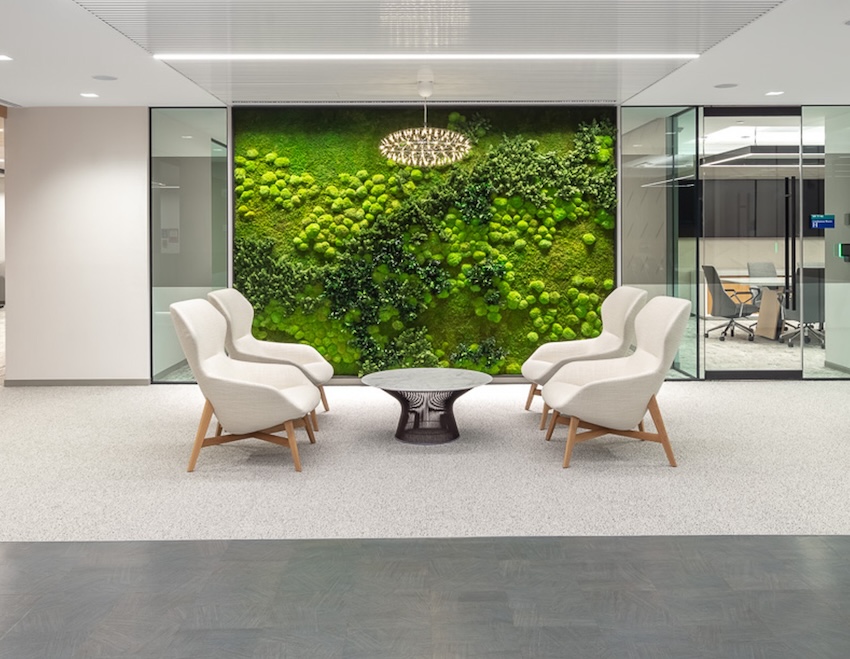Restorative & Regenerative Design as Holistic Design Approach
Neuroaesthetics, neuroarchitecture, biomimicry, and preserved gardens collaborate to achieve transformative, human-centric spaces
Sponsored by Garden on the Wall® | By Amanda Voss, MPP
This course introduces interior designers and architects to the innovative fields of Neuroaesthetics, Neuroarchitecture, and Biomimicry, with a special focus on integrating Preserved Gardens and Biophilic Design principles. Participants will learn to create environments that enhance human well-being and environmental sustainability, exploring the psychological and regenerative impact of design elements.
The curriculum is structured to progress from fundamental concepts to more intricate applications, making it ideal for professionals aiming to incorporate cutting-edge science into their design practices. Participants will gain a deep understanding of Biomimetics, Biomimicry, Neuroaesthetics, Neuroarchitecture, Restorative Design, and Regenerative Design.
Through this comprehensive approach, designers will learn to craft spaces that are not only aesthetically pleasing but also support cognitive and emotional health. The course also provides design professionals with insights into mindful design and a holistic approach, considering both neurotypical and neurodivergent occupants of designed spaces.
By the end of the course, participants will be equipped with the knowledge and tools to create innovative, sustainable, and human-centered designs that reflect the latest advancements in the intersection of neuroscience and architecture.

Photo courtesy of Garden on the Wall
Garden on the Wall® is an award-winning provider of turn-key, Maintenance-free Garden Installations exclusively for interiors. Our gardens are created with All Natural Preserved Plants. Our mission is to elevate the spirits of occupants by bringing maintenance free nature-art installations to imaginative designed spaces; making these places better to live in and enjoy.
Originally published in Architectural Record
Originally published in August 2024
LEARNING OBJECTIVES
- Explain the basic principles of neuroaesthetics and neuroarchitecture and how these disciplines intersect with interior design and architecture, using insights from key studies and research.
- Apply the concepts of biophilic design and sensory experience to enhance indoor environments and boost mental health and productivity via biomimcry.
- Design spaces that integrate preserved natural elements, such as moss walls and preserved gardens, and form a dynamic fusion between aesthetic values and psychological well-being.
- Critically evaluate and adapt existing architectural and interior designs to better comply with neuroaesthetics principles, improving both the functionality and the human experience within designed spaces.











